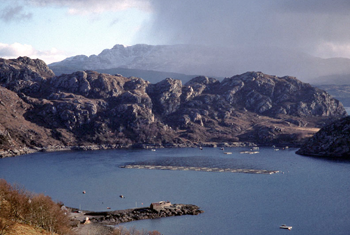Scotland's Aquaculture
Aquaculture is a growing and increasingly important food production industry to Scotland. It helps to underpin sustainable economic growth in rural and coastal communities particularly in the Highlands and Islands with many depending on the employment and revenue it provides.

Scottish aquaculture is dominated by Atlantic salmon. Scotland is the third largest globally producing 192,129 tonnes in 2020. Scottish farmed salmon is Scotland's top food export – fresh salmon is exported to over 50 countries. Rainbow trout (7,576 tonnes), brown trout, halibut and cleaner fish are also produced. For details see the fish farm production surveys - gov.scot (www.gov.scot).
Scottish shellfish production was dominated by farmed blue mussel production at 5,661 tonnes in 2020. Pacific oyster (2,938,000 shells), native oyster (75,000 shells), scallop ( 19,000 shells) and queen scallop were also grown in 2020. For details see Scottish shellfish farm production surveys - gov.scot (www.gov.scot).
There is potential for a seaweed industry to develop in Scotland. The product from seaweed farms has the potential to be used in a number of ways, including food for human consumption, animal feed, nutraceuticals, biotechnology, pharmaceuticals, and fertilisers.
As part of its policy to increase sustainable economic growth, the Scottish Government has identified the food and drink sector as a key economic area for development. Scotland’s National Marine Plan (NMP) was adopted on 25 March 2015 and laid before Parliament on 27 March 2015. It sets out a national strategy, ensuring sustainable economic growth of marine industries while taking into account environmental protection, and sets out policies with economic, social and marine ecosystem objectives. It includes a number of objectives and marine planning policies in relation to aquaculture.